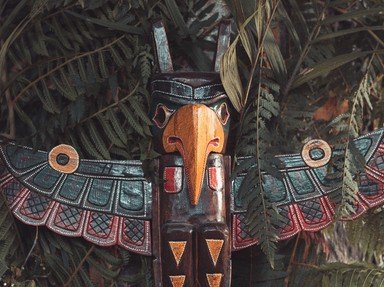Quiz Answer Key and Fun Facts
1. The word 'Anasazi' was not used by the Ancestral Puebloans to describe themselves. It is actually a Navajo word used to describe them. What does it roughly translate to in English?
2. What region of the southwestern United States did the Anasazi inhabit?
3. The Anasazi had various tools used for daily life as well as for hunting. One of the tools they used for hunting was a type of dart or spear thrower. What is it called?
4. As with many cultures, religion played a big role in the life of the Anasazi. What were their religious buildings called?
5. Once the Ancestral Puebloans began to settle into more permanent settlements, they also began to cultivate crops. Their staple foods consisted of which of the following?
6. How did the great houses of Chaco Canyon communicate with their outlying settlements?
7. The Hopi are one of the modern-day tribes descended from the Ancestral Puebloans. What term do they use to refer to their ancestors?
8. During the Pueblo phase of Anasazi history, what farming techniques did the people begin to develop?
9. Which of the following is NOT true of Anasazi pottery?
10. The Anasazi used a system of 'roads' or pathways.
Source: Author
tiffanyram
This quiz was reviewed by FunTrivia editor
bloomsby before going online.
Any errors found in FunTrivia content are routinely corrected through our feedback system.


